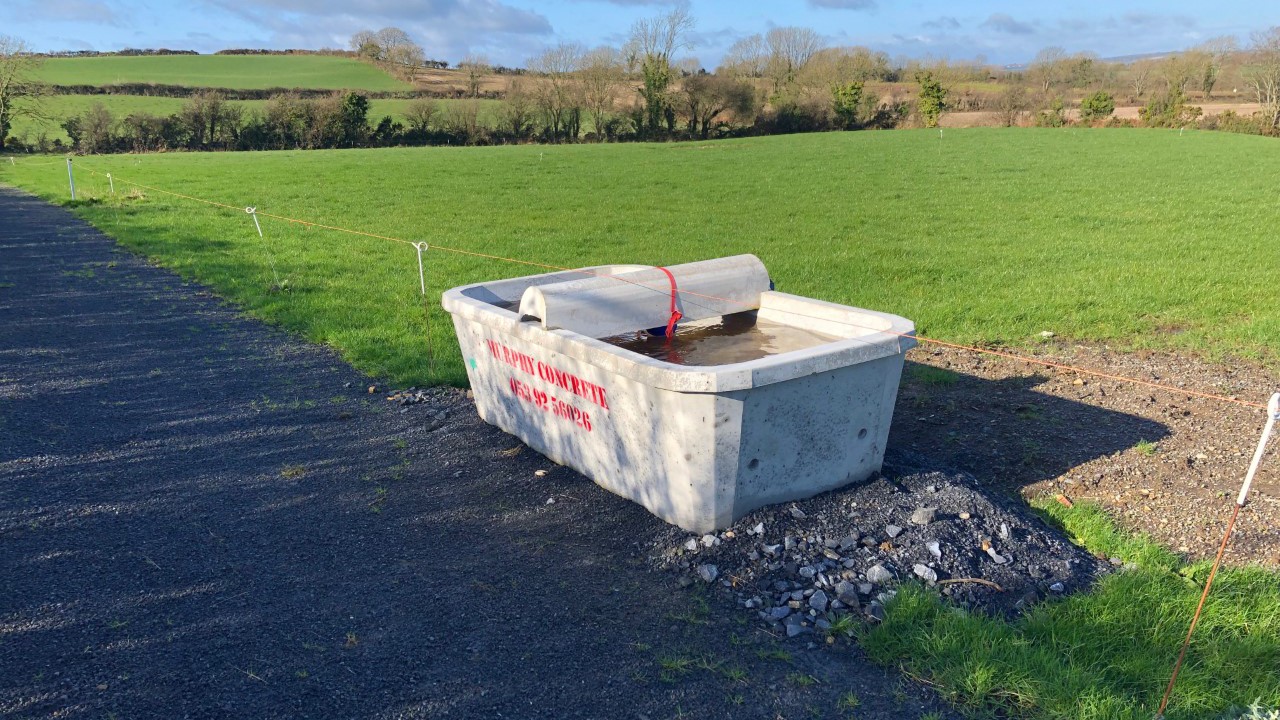The warm weather over the past week or so, which has seen temperatures rise above 20º, has put considerable pressure on farmers, as grass growth rates continue to take a dip – due to the dry conditions.
However, as well as the slack growth rates, it is important to remember that cows will drink large quantities of water as the weather gets warmer, so it is important to keep this in mind when the weather is warm.
It’s important that the infrastructure and water flow rates are adequate to meet the demands of the herd.
On warm days, a cow’s requirement for water dramatically increases, particularly after milking when she will consume 30-50% of her water intake.
According to Teagasc, during a warm sunny day, a cow’s daily water requirement could jump to 90L.
Flow Rate
Dairy cows can drink up to 14L of water per minute. Therefore, the rate in which the water enters the drinker is important to consider.
Assuming the daily demand is 70L/cow and almost 50% is consumed in the three hours after milking, an hourly flow rate of 12L/hour is required.
For a 100-cow herd this means 1,200L/hour or 20L/minute.
How to check flow rate:
- Mark the level of water in the drinker;
- Tie up the ballcock and empty 20L from the drinker;
- Release the ballcock and measure how long it takes to fill to the mark;
- Divide 20L by the time taken to refill.
If the flow rate is less than what is required for your herd, then your water supply system needs to be improved.
Trough Capacity
For smaller herds of cows, a smaller trough will, in most cases, suffice; however, for a big herd, a small trough will lead to problems, such as an inadequate water reserve, bullying at drinking and a drop in milk yield.
Teagasc recommends 9L/cow (two gallons / cow); or, in order words, 1,350L (300 gallons) for 150 cows.
For farms that milk their herds through a conventional milking parlour, they should locate their troughs in the centre of the paddock to minimise the cows’ walk for water and to avoid cows crowding at gaps – causing damage and delays when cows are exiting the paddock.
However, in robotic-milking systems, the opposite approach is taken to where a trough is located. Many farmers locate their trough near exit points to encourage cows to head towards the gate of the paddock, in the direction of where the robot is.
In robotic-milking systems, cows don’t tend to gather at gaps, as they can come and go from the robot whenever they please. Therefore, the likelihood of cows damaging the entry/exit points into paddocks is unlikely.
The same can’t be said for cows that are milked through a conventional parlour. Cows tend to gather at the gate when they know it’s time for milking, so locating troughs away from the gate will reduce the damage that they can cause.


